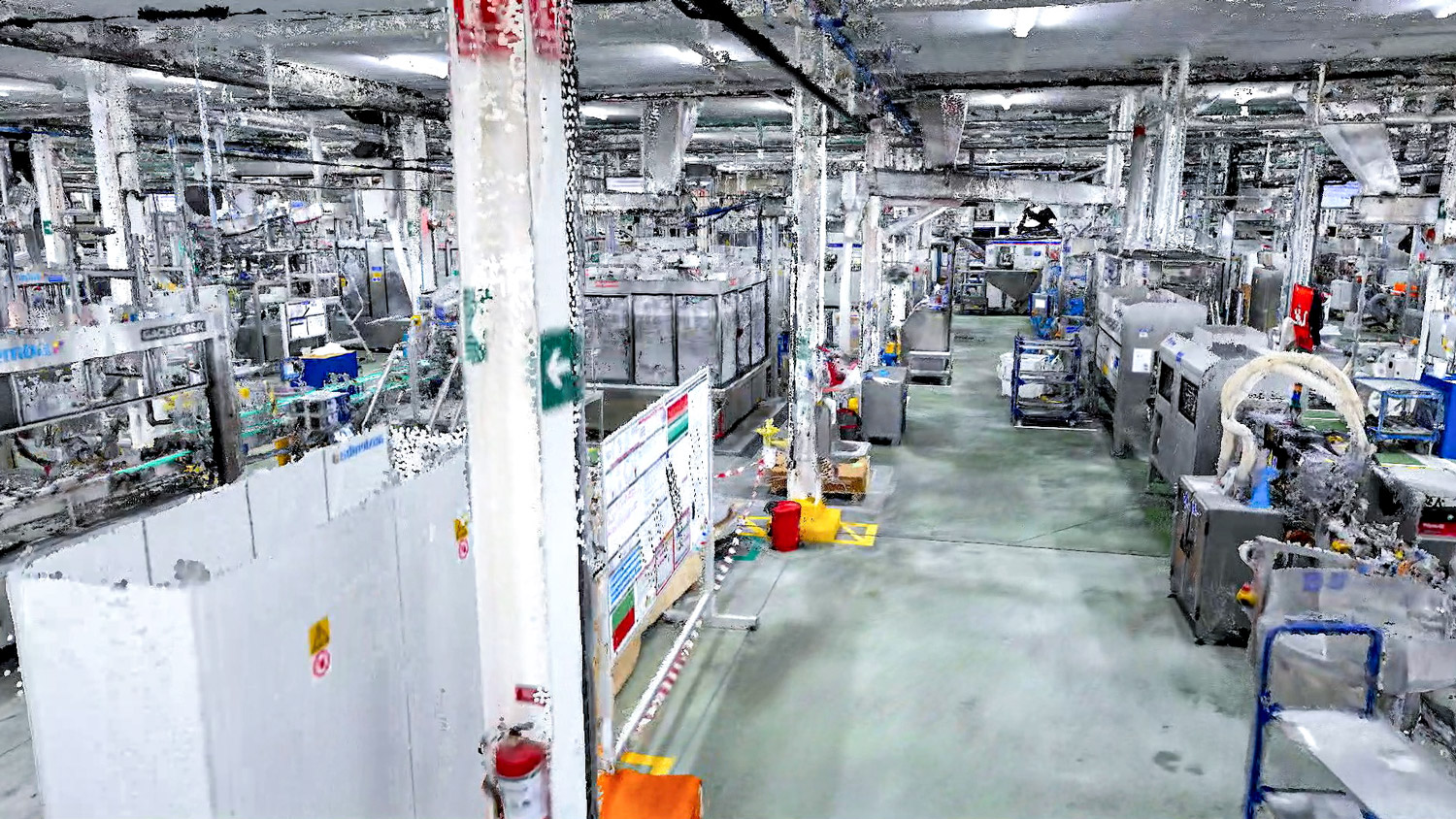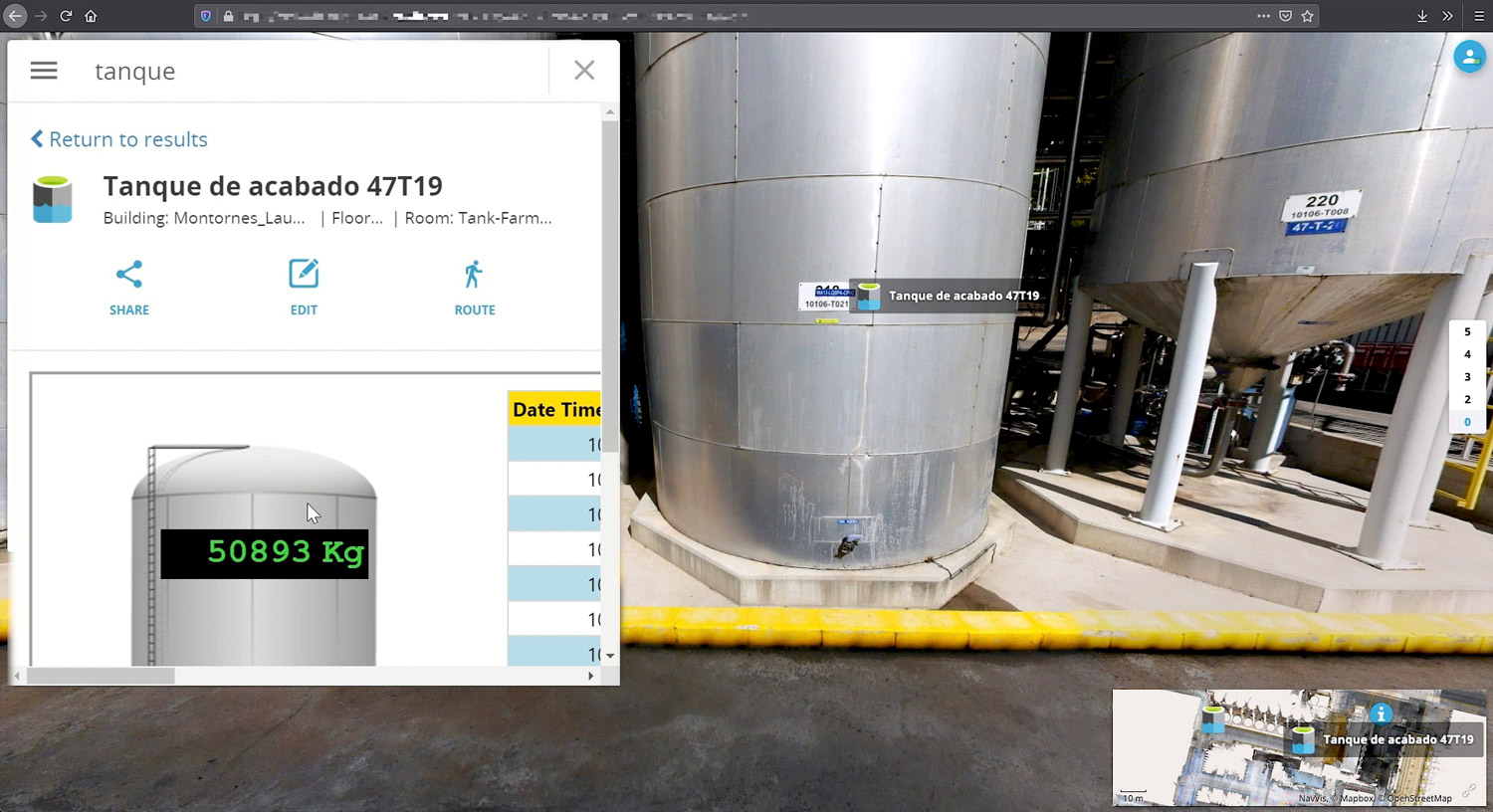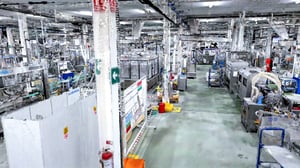German consumer goods manufacturer Henkel has two major factories in Serbia producing dishwasher detergent for more than 39 markets around the world.
One of these factories is a bricks-and-mortar facility in the city of Kruševac. The other is virtual, comprising a complete digital copy of the factory including all its assembly lines and rooms.
Henkel’s virtual factory is a perfect example of a digital twin – a virtual representation of a real-world object which, in this case, is an entire production facility.
Henkel wanted to create a safer environment during the pandemic and accelerate its remote work initiatives. One of the biggest challenges was the fact that the manufacturer operates on an international scale, with employees and stakeholders scattered all over the world. As such, they needed to provide a scalable and readily accessible solution that would allow people to tour the factory and access key data points remotely. Their NavVis-powered digital production twin proved to be the answer.

Powering the factory of the future
Digital factory solutions use a combination of technologies, such as real-time data collection from laser scanning of rooms and appliances, to create digitalized replicas of production environments.
That means large parts of the plant may be visited by way of a virtual factory tour through a web browser. Every room and production line was captured using 3D surveys and laser scanning carried out with a combination of wearable and wheel-mounted mapping systems.
These 3D models allowed Henkel to build a highly accurate virtual representation of the facility that engineers could ‘visit’ remotely to carry out inspections and continuously optimize their production processes.
Not only has this approach been easier and safer during the pandemic; it also means that stakeholders all over the world can virtually tour the factory to see how their technology is being implemented in a real-world environment.
These readily accessible insights are what power the factory of the future. For example, rooms and production lines can be planned in advance. Any proposed changes can be simulated in a risk-free environment before being applied to the real factory. Inspections by suppliers and machine builders can be carried out remotely, without having to visit in person. Performance can be continuously optimized by addressing all factory planning questions using the virtual model rather than the real facility.
Digital twins open up a raft of new possibilities in the era of Industry 4.0. Another of the most important advantages for manufacturers like Henkel is employee training. Employees can now practice operating hazardous machinery in a safe virtual environment. In the near future, these experiences will become even more immersive thanks to cutting-edge virtual and augmented reality systems.

Leveraging data for smarter decision-making
In the factory of tomorrow, every device, process, and worker is connected in support of the continuous improvement of mission-critical operations.
The future of production is based on the collection and analysis of huge amounts of both real-time and historical data. This includes things like machine uptime and performance metrics, operating parameters, production line throughput, and countless other information. Modern Internet of Things (IoT) sensor systems make it possible to capture this data across production environments, while digital twins make it accessible from anywhere in the world.
Coupled with data visualization and machine learning, technicians and other stakeholders can make sense of massive amounts of data and use it to drive informed decision-making. Due to a combination of infrastructure and a NavVis-enabled digital factory, that is how Henkel is able to change certain production processes parameters, adapt capacities, and optimize raw material usage.
How NavVis’s digital factory solution is enabling Henkel’s digitalization
Until recently, the process of accurately capturing as-is assets was extremely difficult and time-consuming, especially if relying only on terrestrial scanning technology. In addition, factory documentation is often inconsistent and only available to experts using specialist software.
However, thanks to the NavVis Digital Factory Solution, companies such as Henkel are able to mitigate these concerns by leveraging spatial data provided by NavVis to create an up-to-date virtual representation of its production facilities that’s accessible via a web browser.
NavVis’s reality capture technology is up to 10 times faster than a terrestrial laser scanner and delivers accuracy that exceeds industry standards. NavVis’s spatial data platform, NavVis IVION Enterprise, enables factory planners and engineering departments, like those at Henkel, to better understand, collaborate, and make the right decisions, based on actual site conditions they can trust.
These technologies together have brought Henkel’s vision of the factory of the future one big step closer to reality. Watch our in-depth video below to get an insight into how Henkel is accelerating their digital transformation with NavVis technology:
Wrapping up
Want to learn more about NavVis Digital Factory Solution and how it can power your factory of the future? Check out our live demo to test out features, move through an actual factory, and get an overview of the most common use cases.

